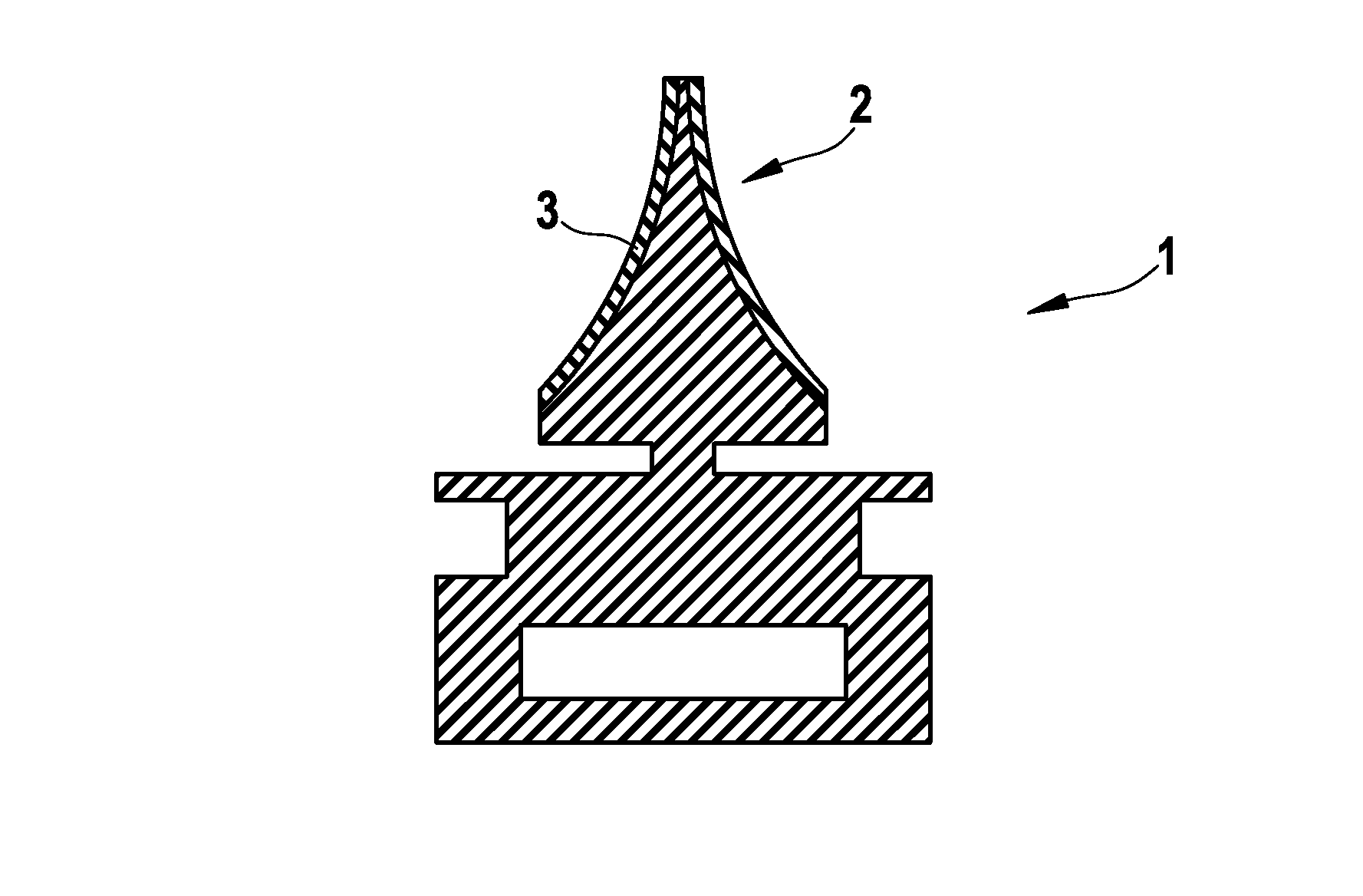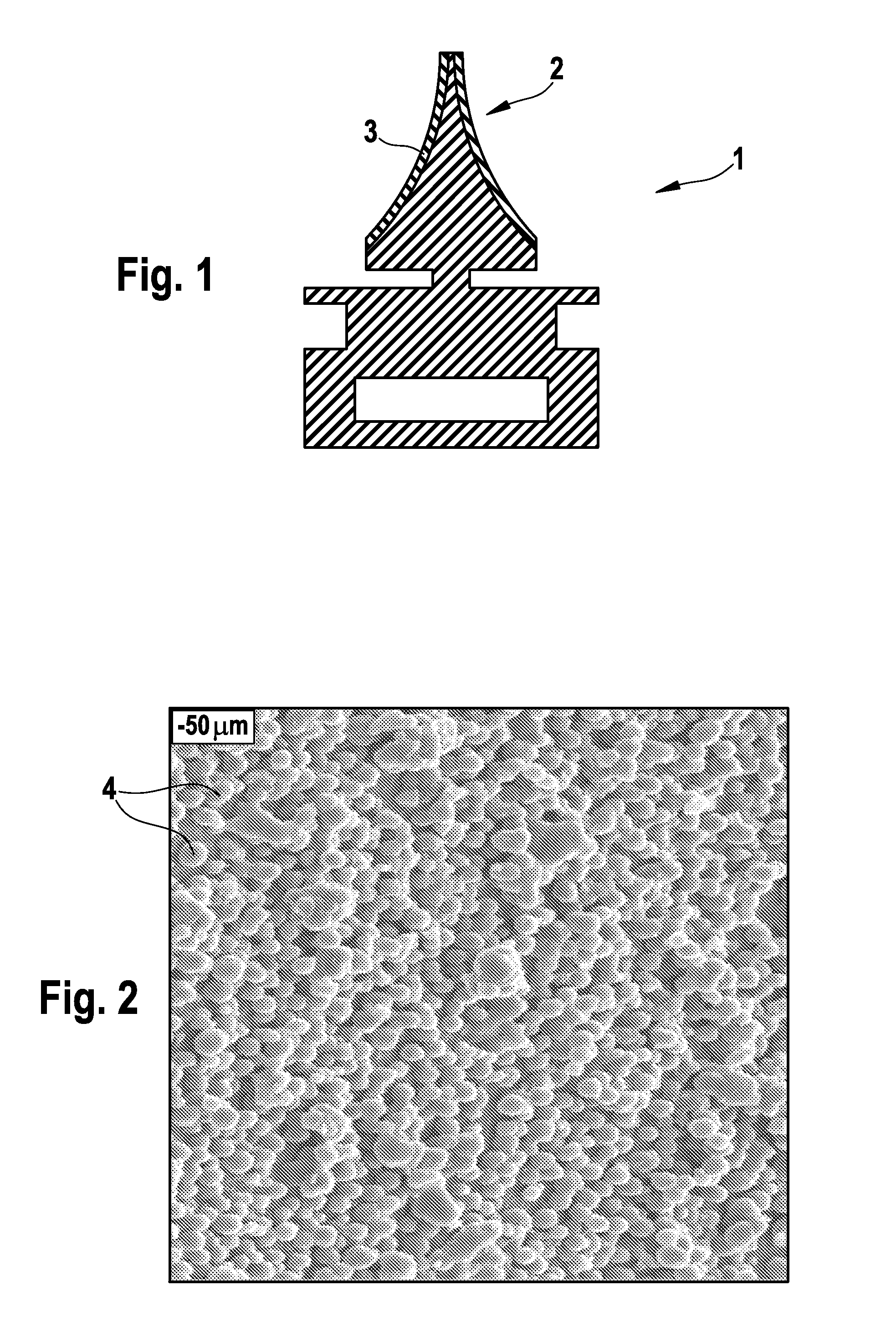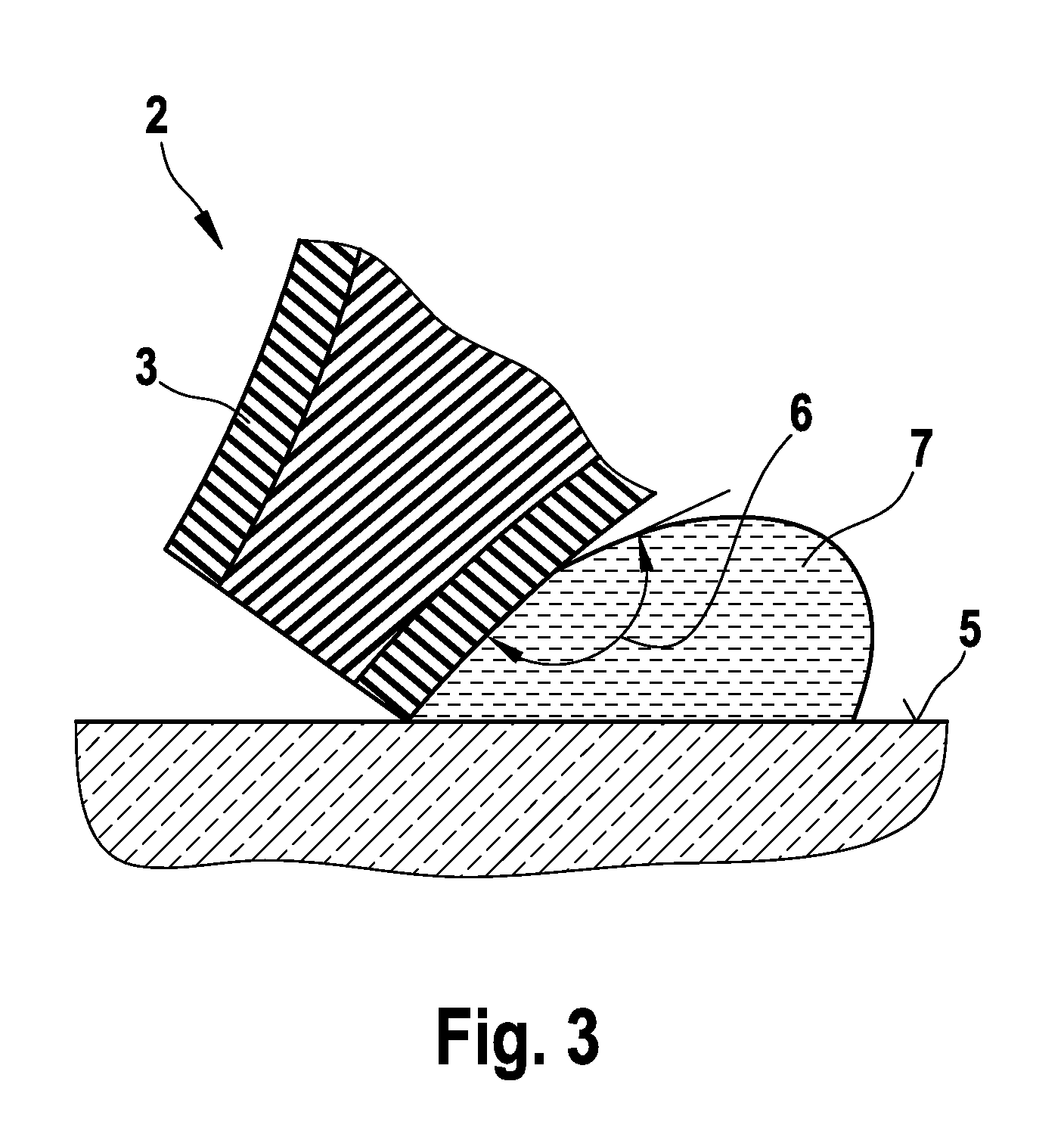Wiper blade rubber and method for the production thereof
a technology production method, which is applied in the field of wiper blade rubber, can solve the problems of insufficient improvement of non-ideal wipe quality in particular on hydrophobic surfaces, and disadvantageous running performance, so as to improve the running performance improve the wipe quality, and improve the wipe quality of the wiper blade rubber
- Summary
- Abstract
- Description
- Claims
- Application Information
AI Technical Summary
Benefits of technology
Problems solved by technology
Method used
Image
Examples
Embodiment Construction
[0024]FIG. 1 shows an individual profile 1 of a wiper blade rubber 2 with a surface layer 3 applied in one embodiment of the invention after the vulcanizing process and any cleaning step, on both sides of the wiper blade rubber 2.
[0025]The hydrophobic and structured surface layer 3 of the wiper blade rubber 2 of the invention is illustrated by the scanning electron micrograph (SEM) in FIG. 2. The particles are indicated by 4, these being applied to the surface of the wiper blade rubber 2 and bonded thereto.
[0026]The process which can be used advantageously to achieve the surface layer 3 with hydrophobic property and surface structure encompasses the application of particles 4 or of a foil produced from a suitable material in a separate process, not described in any further detail. The particles 4 applied or the foil applied is bonded to the surface of the wiper blade rubber 2, thus producing a surface layer 3 with the desired hydrophobic property and the structuring in the micromete...
PUM
| Property | Measurement | Unit |
|---|---|---|
| contact angle | aaaaa | aaaaa |
| height | aaaaa | aaaaa |
| height | aaaaa | aaaaa |
Abstract
Description
Claims
Application Information
 Login to View More
Login to View More - R&D
- Intellectual Property
- Life Sciences
- Materials
- Tech Scout
- Unparalleled Data Quality
- Higher Quality Content
- 60% Fewer Hallucinations
Browse by: Latest US Patents, China's latest patents, Technical Efficacy Thesaurus, Application Domain, Technology Topic, Popular Technical Reports.
© 2025 PatSnap. All rights reserved.Legal|Privacy policy|Modern Slavery Act Transparency Statement|Sitemap|About US| Contact US: help@patsnap.com



